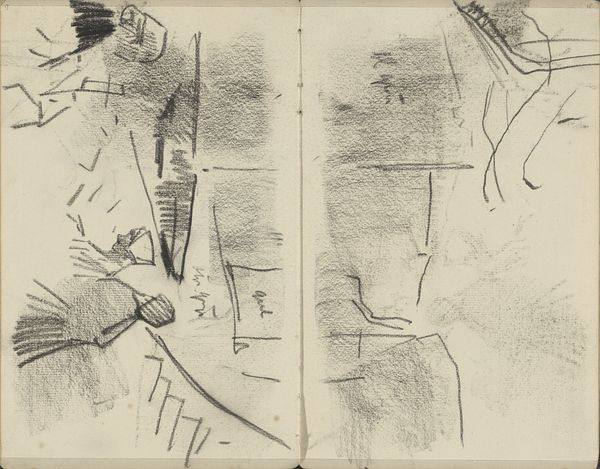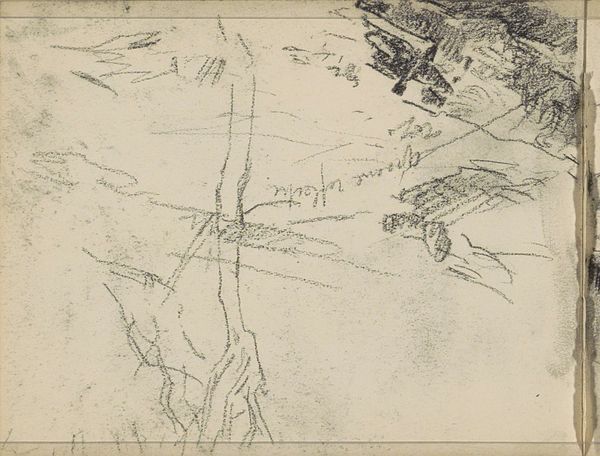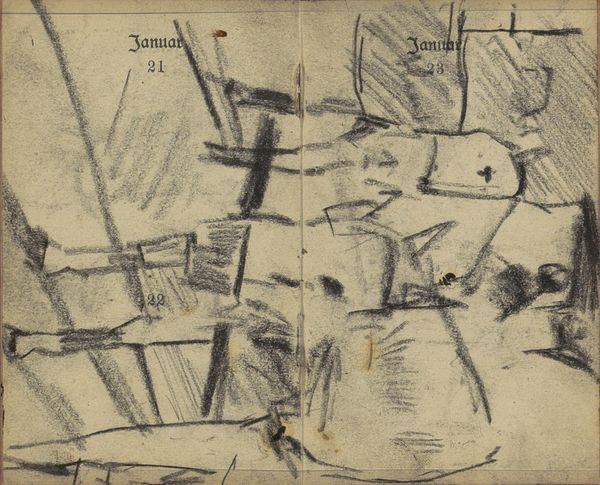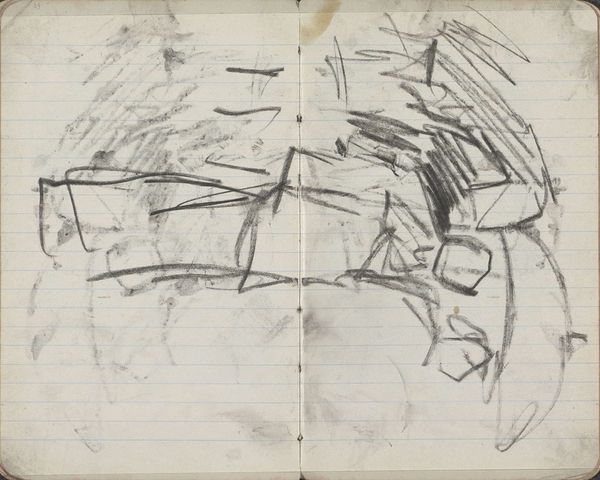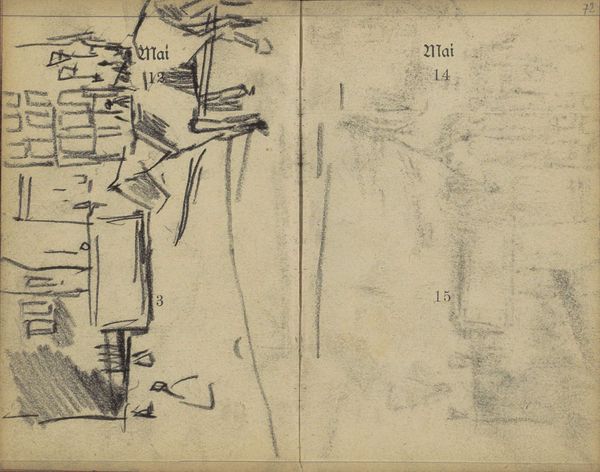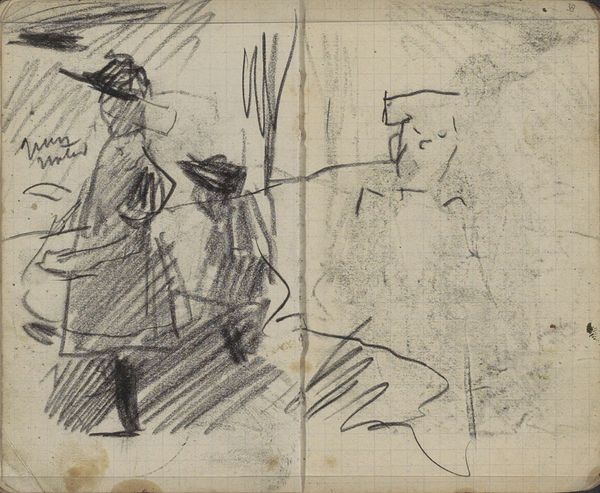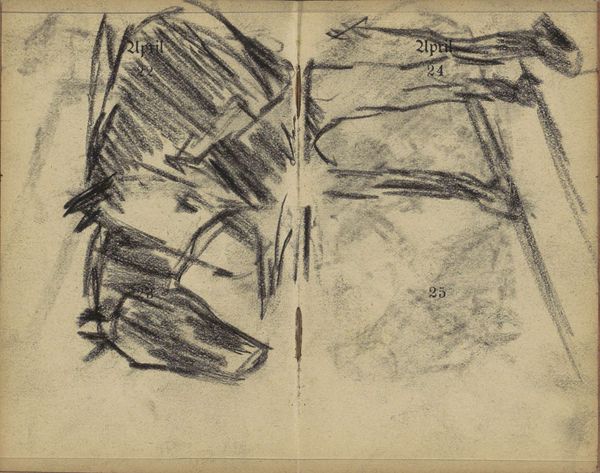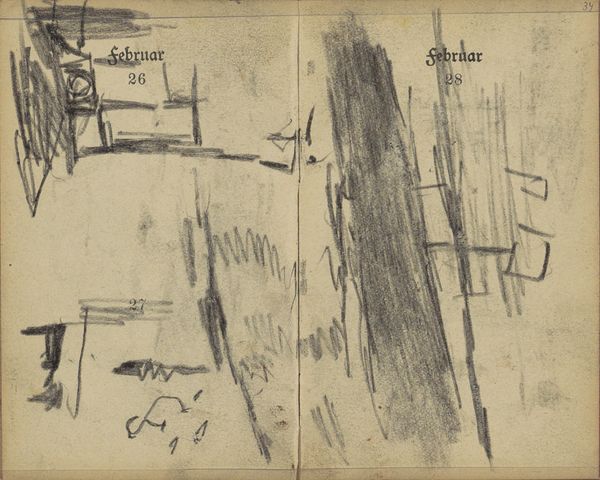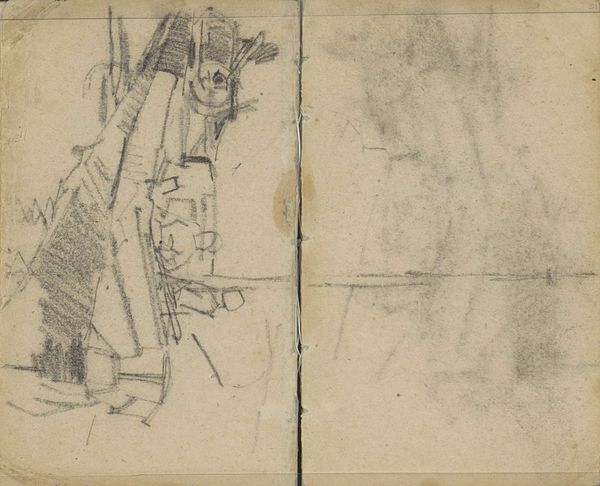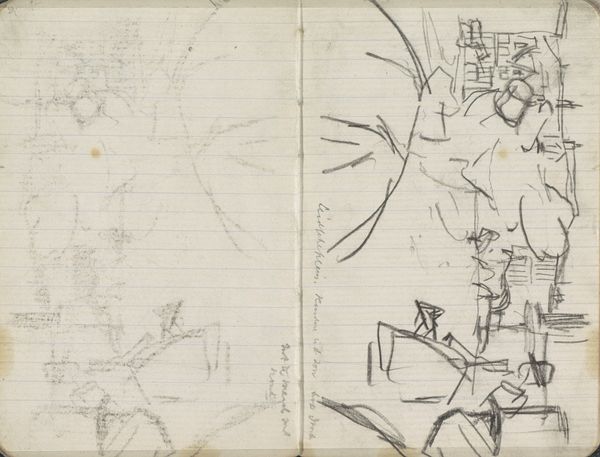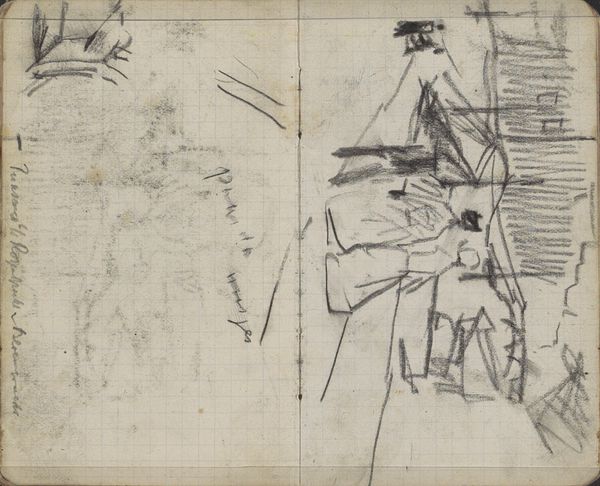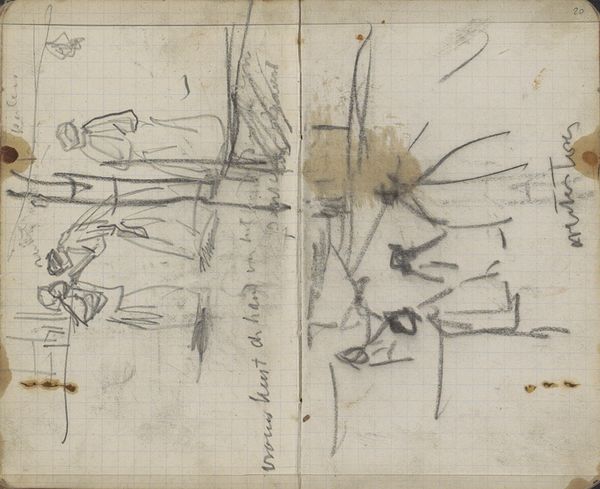
Copyright: Rijks Museum: Open Domain
Editor: Here we have George Hendrik Breitner's "Paarden," created in 1893. It’s a charcoal drawing on paper, and it strikes me as quite fragmented, like a series of quick studies. What's your read on this piece? Curator: It’s fascinating to consider the means of its production. Look closely: charcoal, a readily available and relatively inexpensive material. And paper, a surface often associated with sketches, studies, or preparatory work, rather than finished artworks destined for elite consumption. Editor: So, you're focusing on the everyday materials rather than some grand artistic vision? Curator: Precisely! Breitner wasn't necessarily aiming for 'high art' here. Think about the social context: late 19th-century Amsterdam. What role did horses play in the city’s economy and labor force? These sketches might represent working horses, part of the everyday urban experience rather than symbols of wealth or status. How might those circumstances influence the materiality and Breitner’s approach? Editor: I hadn’t considered the horses as workers themselves! So, Breitner, using these simple materials, captures their utilitarian role, their labor. Curator: Exactly. Breitner may have seen beauty in the commonplace, elevating the working horse through the artistic process. His artistic choices aren't divorced from the reality of labor. Instead they amplify the reality through its raw materiality. Editor: It gives the drawing a very different feel, focusing on process and social context. Curator: It makes you think about what and how it represents. This piece isn’t about pure aesthetics; it's about understanding art as a product of material conditions and social relations. Editor: I hadn't really considered all of the aspects behind creating art, besides aesthetics. Thanks for the info!
Comments
No comments
Be the first to comment and join the conversation on the ultimate creative platform.
